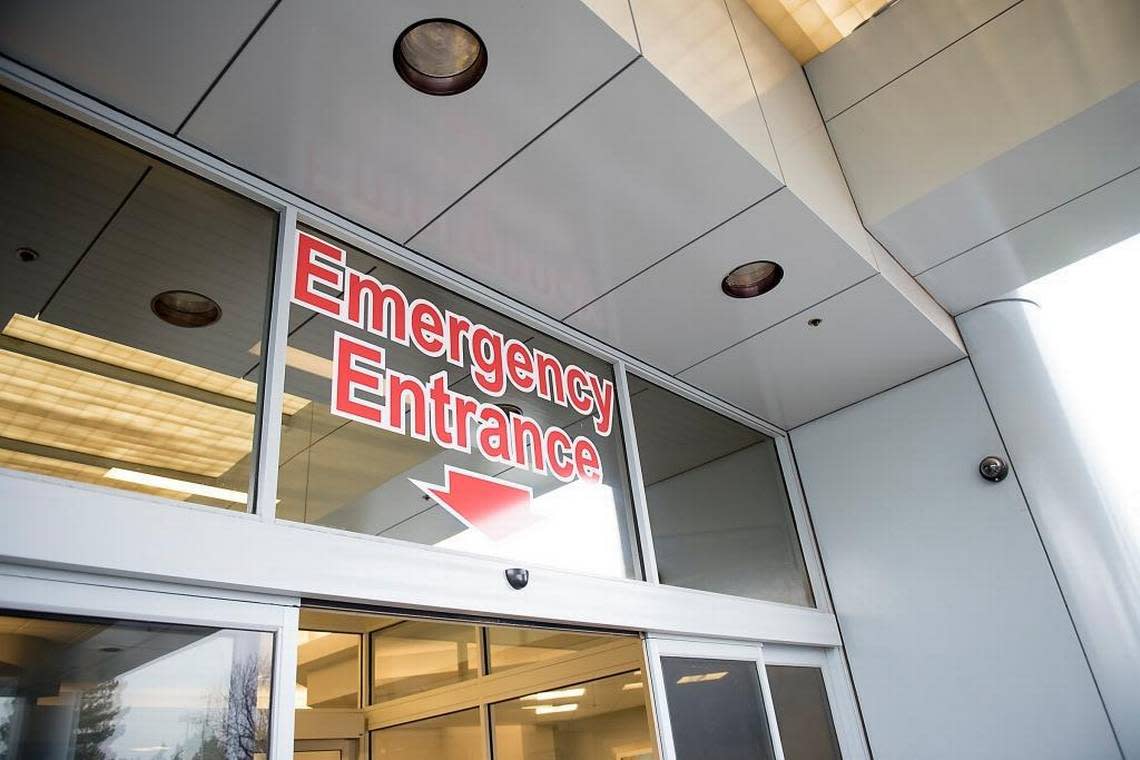Flu season strikes in Stanislaus County as COVID-19 also sends more people to hospitals

- Oops!Something went wrong.Please try again later.
Hospital emergency department visits for seasonal flu are increasing and, yes, people still are coming down with COVID-19 in Stanislaus County.
The respiratory syncytial virus, or RSV, also has been a threat for young children and older adults, though not as severe as last year, a health official said.
Dr. Thea Papasozomenos, county public health officer, described more of a typical respiratory virus season so far and said people can take simple steps to stay well.
“We are still seeing increasing ER visits for COVID-19 and influenza,” Papasozomenos said in an email Tuesday. She added that a surge of RSV in the fall may have started to plateau statewide, but it is too early to tell.
RSV is an illness with coldlike symptoms, but some cases are serious for infants and older people.
While hospitals in some areas of the San Joaquin Valley have been overwhelmed by a combination of respiratory viruses, Modesto-area hospitals contacted by The Modesto Bee this week said they were not experiencing major problems.
Dr. Stephen Parodi, infectious disease specialist and clinical lead for Kaiser Permanente, said in a statement that flu, RSV and COVID-19 are putting more patients in Kaiser’s Northern California hospitals, including the medical center in north Modesto, but there are no significant issues of hospital capacity.
Jennifer Bayer, a spokesperson for Central Valley Doctors Health System, including Doctors Medical Center of Modesto and Emanuel hospital in Turlock, said the hospitals are seeing an uptick in RSV cases.
“As we enjoy the holidays and winter season, we urge our community members to proactively protect themselves and others by staying home when they feel under the weather, wearing a mask when possible and using good hand hygiene,” Bayer said by email.
The California Department of Public Health said influenza is spreading more rapidly but remains at a moderate level in most regions.
A state health report earlier this month showed the most flu activity in the central region of California. That area includes Stanislaus, San Joaquin, Merced, Calaveras, Tuolumne, Mariposa, Fresno, Tulare and other counties.
Test positivity for seasonal flu was 15% statewide from Dec. 10-16, an increase from 12.5% the previous week. Patients hospitalized for flu symptoms represented 1.3% of hospital admissions in the state Dec. 10-16, which was the same as the previous week.
RSV remained at elevated levels in California. According to the state’s weekly surveillance reports, test positivity for RSV was 10.1%, down from 12.2% the second half of November.
County health officials said the RSV season began earlier this fall compared with other illnesses. Officials are watching emergency room visits to tell if local RSV activity is decreasing or reaching a plateau.
Wastewater surveillance for mid-December revealed higher levels of RSV in Turlock than in Modesto.
The county Health Services Agency noted that hospital admissions for COVID-19 were increasing as of last week. The test positivity rate was 9.6% statewide.
Papasozomenos said it isn’t too late to get a flu shot or updated COVID vaccine to protect against serious illness. It takes about two weeks for flu vaccine to take effect, but the influenza often peaks in January or February in the Northern San Joaquin Valley.
What flu strain is most prevalent?
Surveillance testing has suggested that the H1N1 flu strain is more prevalent this year. That strain usually causes less serious illness compared to the H3N2 type that was widespread during severe flu seasons in the past, county staff said.
Sutter Health, associated with Memorial Medical Center in Modesto, has a resource for telling the difference between COVID-19, influenza, a cold and RSV.
A fever between 100 and 102 degrees, lasting three or four days, is common with seasonal flu, but it may or may not be a symptom of COVID-19 and is rare with a cold and RSV.
Headache may be most severe with influenza and also is a common COVID symptom, but is rare with a cold or RSV. A stuffy nose and sneezing are common with COVID-19, cold and RSV.
Shortness of breath occurs with more severe COVID-19 infections, and babies and young children struggling with RSV may experience wheezing.
To keep from spreading the respiratory viruses, stay away from people who are sick. Practice good etiquette by coughing or sneezing into a tissue or sleeve, and wash hands frequently.
Also, people who are feeling ill should consider wearing a mask around others.

